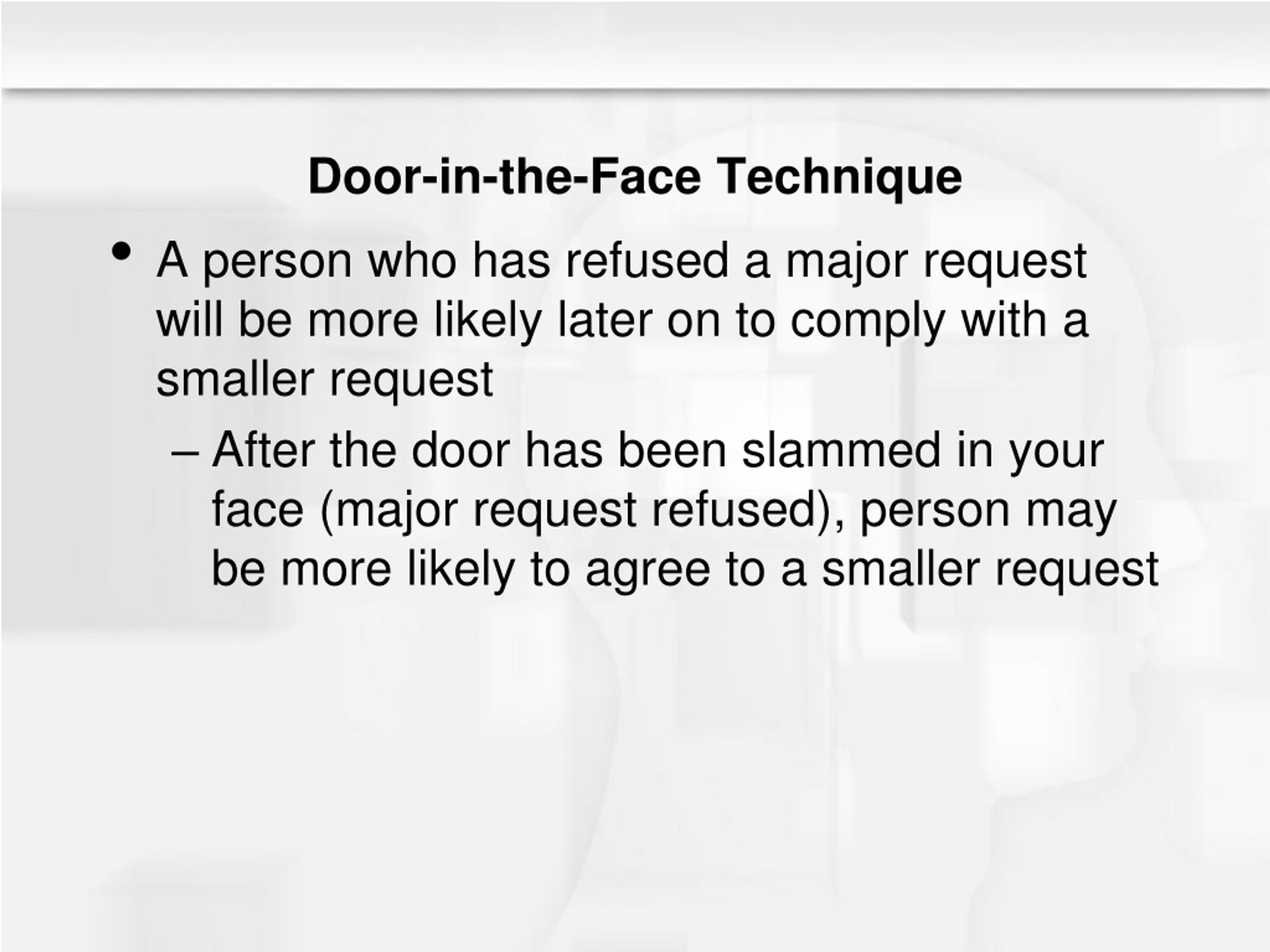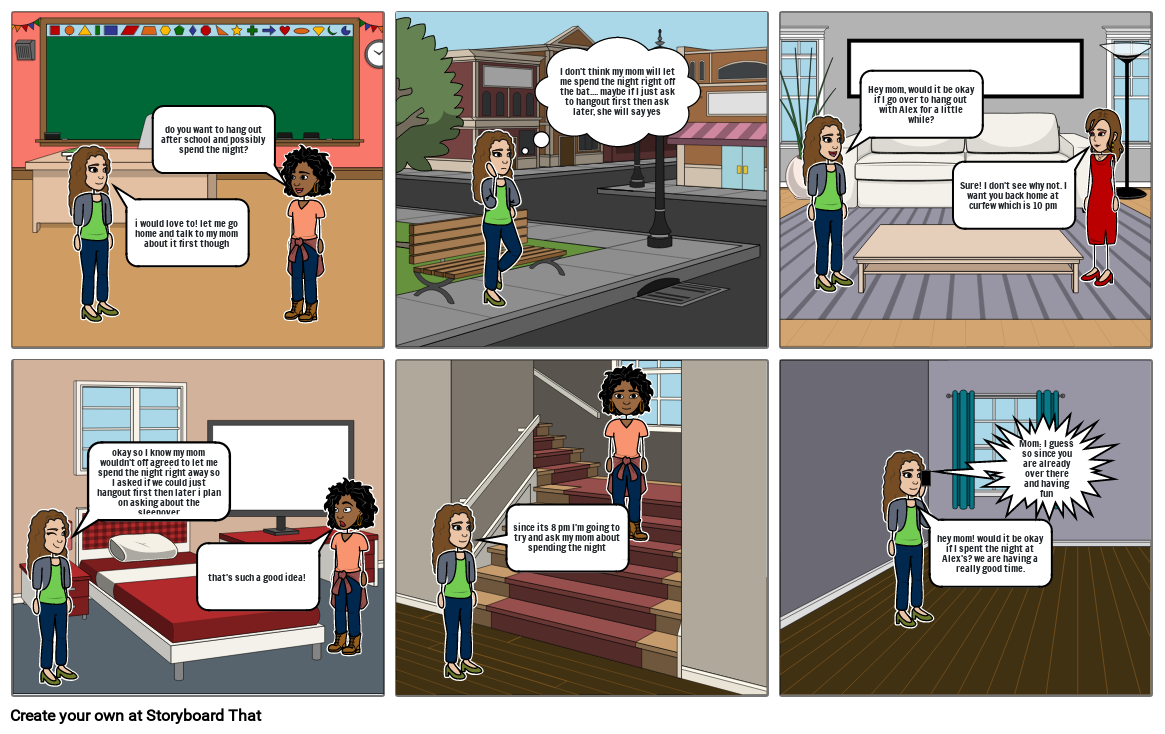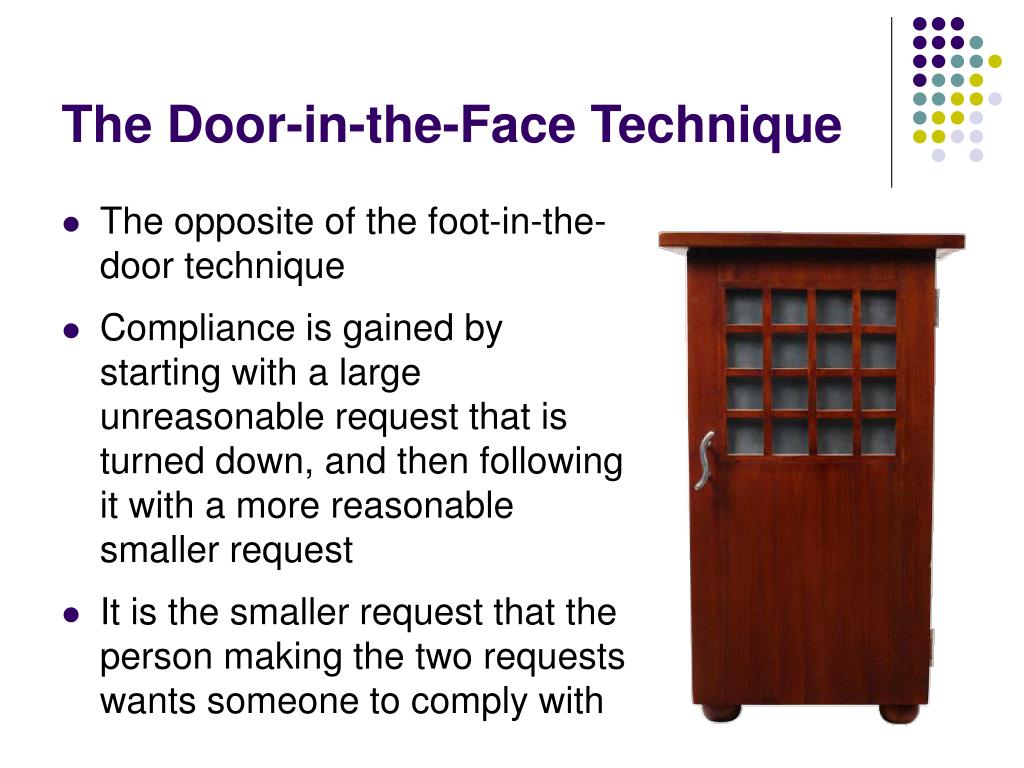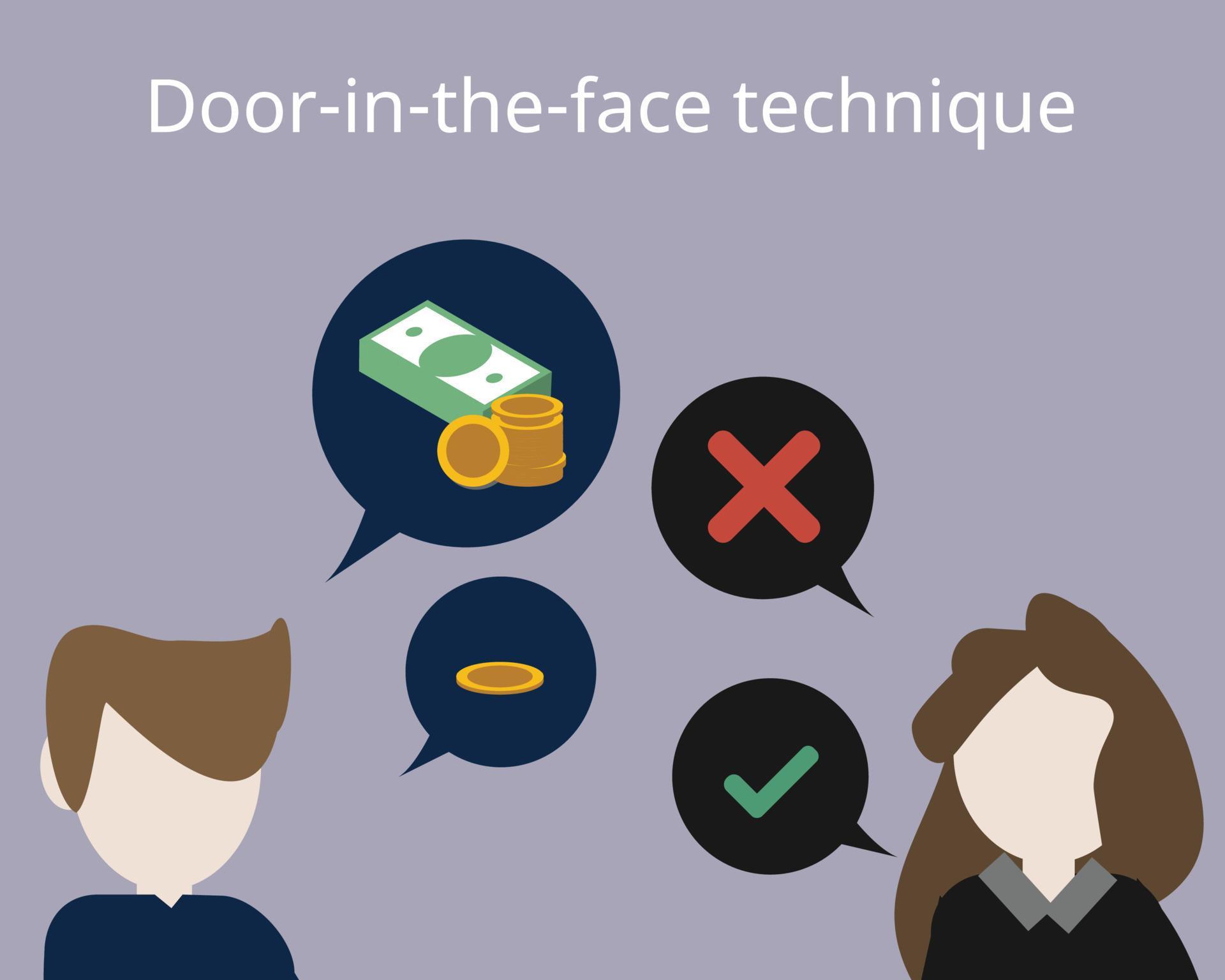
The DOOR in the FACE Technique When a Big Ask Leads to a Smaller One YouTube
Door-in-the-face (DITF) is a sequential request technique in which a source first makes a large request. Upon the receiver's refusal, a smaller (target) request is made. DITF has been found to increase compliance with the target request compared to control conditions where only the target request is made.

PPT Chapter 15 PowerPoint Presentation, free download ID269814
To the relief of fundraisers, the door-in-the-face effect was as strong in Germany in 2021 as it was in the US in 1975. Practitioners of the science of are familiar with the.

Door In The Face Technique Psychology slidesharedocs
The Door-In-The-Face (DITF) technique is a persuasion tactic that involves initially making a very large request that is expected to be refused, followed by a much smaller request. The smaller request is what the requester actually hopes to have granted. The curious name of this technique gives away a hint of its essence.

Psychology of Influence The Door in the face Technique (Part 3) YouTube
Search for: 'door-in-the-face technique' in Oxford Reference ». A technique for eliciting compliance by making a very large initial request, which the recipient is sure to turn down, followed by a smaller request. It was introduced in 1975 by the US social psychologist Robert B (eno) Cialdini (born 1945) and several colleagues who performed a.

Door In The Face Technique Psychology Definition DEFINITIONVD
The door-in-the-face technique is a type of sequential request strategy. It is often used to increase compliance rates of a particular request.

DoorintheFace Technique Theory & Examples Video & Lesson Transcript
The door-in-the-face technique does have its limits. If the first request seems unreasonably large, then the technique can backfire. However, as the results of Cialdini and colleagues' experiment show, requests can get pretty big before they seem unreasonable. (Two years of volunteer work with juvenile delinquents is a pretty big request.)

Doorintheface technique Storyboard by samanthahuber
The door-in-the-face technique (henceforth referred to as DITF) is a technique that involves a set pattern―first you get a no and then you get a yes. This is how it works:

Door In The Face Technique slidesharedocs
The "Door-in-the-Face" Technique . In this approach, marketers start by asking for a large commitment. When the other person refuses, they then make a smaller and more reasonable request. For example, imagine that a business owner asks you to make a large investment in a new business opportunity. After you decline the request, the business.

Doorintheface Technique YouTube
This persuasion technique is called door in the face and plays a great role in social psychology. The door in the face technique was first demonstrated by Robert Cialdini.

Psychology of Influence The Door in the face Technique (Part 2) YouTube
APA Dictionary of Psychology door-in-the-face technique Updated on 04/19/2018 a two-step procedure for enhancing compliance in which an extreme initial request is presented immediately before a more moderate target request.

What is Door in the face technique? Marketing91
Does the Door-in-the-Face Technique Really Work? Researchers in Germany attempted to replicate a classic finding in psychology. Posted July 29, 2021 | Reviewed by Vanessa Lancaster Key points.
How to Use the “DoorintheFace” Technique to Sell More by Ramsay Lewis Better Marketing
The door-in-the-face technique is a compliance method whereby the persuader attempts to convince the respondent to comply by making a large request that the respondent will most likely turn down. This technique achieves compliance as refusing a large request increases the likelihood of agreeing to a second, smaller request.

An Explanation of the Doorintheface Technique With Examples Psychology facts, Face, Techniques
The door-in-the-face technique is a compliance strategy in which a person makes a large request, knowing they will get the "door slammed in their face." This is meant to make the next request - the actual request - seem small and reasonable in comparison. How It Works

B2B Marketing using Proven Door in the Face Technique
In the context of negotiation and persuasion, Cialdini refers to the strategy of following up an extreme request with a moderate one the "door in the face" (DITF) technique, playing on the image of a homeowner slamming the door in a salesperson's face after she makes a ridiculous request.

PPT 4.2 Sociocultural level of analysis PowerPoint Presentation, free download ID1623161
The door-in-the-face technique is a persuasive strategy that involves making a large, unreasonable request first, followed by a smaller, more acceptable one. The idea is that the contrast between.

Doorintheface technique in social psychology 7386915 Vector Art at Vecteezy
The door-in-the-face technique is a compliance method commonly studied in social psychology. [1] [2] The persuader attempts to convince the respondent to comply by making a large request that the respondent will most likely turn down, much like a metaphorical slamming of a door in the persuader's face.